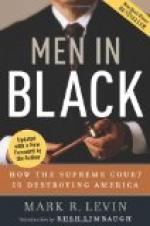The judge then tells again what the witnesses have said, in not quite so many words, but covering the main points. There is no use in that. The jurymen think they ought to remember fairly well what was said. The judge admits it after he is through by saying himself: “Gentlemen, you are to be governed by your own recollection of the testimony rather than by what is said by either side in summing up or by the Court.” If he means that he should have kept still and let them have their own recollection.
Then he goes on: “If you believe any witness has wilfully testified falsely as to a material fact, you may disregard that witness’s whole testimony.” Of course, is that not the reason for their being there? Why, the judge in the beginning made them swear to decide the case “according to the evidence.” The jury is going to do exactly that. They are going to decide which side is lying and which side is telling the truth. They are not quite so stupid as not to know that. There seems no need in insulting them by telling them that they need not believe a witness unless they want to. Why are they there?
The judge tells them that the function of the jury is to decide the facts and for him to decide the law. That is fortunate, for they could not understand the law, even if they wanted to; it is a silly business and it is not common sense. What the jury feels is that the judge’s charge is leaving it to them without any trouble about the law. But wait a moment, the judge is going on to tell them about the law as applied to the particular facts before them.
The important principle of law they are being told is what is known as the preponderance of evidence and the burden of proof. The judge goes on at great length about the weight of evidence. The weight of evidence, he says, is the preponderance of proof and the preponderance of evidence is the weight of evidence, and the man who has the burden of proof must have the weight of evidence and the weight of evidence being the preponderance of evidence is also upon the man who has the burden of proof. And the preponderance of evidence does not mean proof beyond a reasonable doubt, as in criminal actions, but that the proof must be heavier on one side than the other and the one who has the burden of proof must sustain the preponderance of evidence. That is the law; the judge has said it. What it means the jury give up. The lawyers nod their heads wisely. The judge has stated the law correctly.
The judge may go on a little further and tell them more about the burden of proof and the preponderance of evidence. He may say that the weight of evidence does not mean the number of witnesses. The mere fact that one side has six and the other side only two does not mean that the jury are to believe the side who has six. The jury know that when probably they are all exaggerating somewhat they are going to decide the way the thing happened. Then the judge tells them, having seen the witnesses, “That they may consider their bearing on the stand and their manner of giving testimony.” Surely they are going to do that. Is not the best way of knowing whether a man is telling the truth to look at him and watch him while he is talking? There is little sense in the judge advising them to consider his bearing on the stand.




